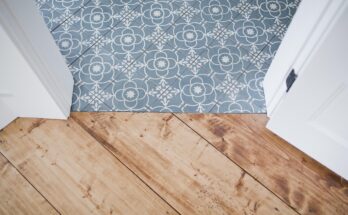ZonaJakarta – High ceilings can be a dream—soaring space, dramatic lighting potential, and a sense of architectural luxury that’s hard to beat. But here’s a surprising design truth: while most people obsess over what’s above, what’s beneath your feet can make or break the room.
The right flooring in a high-ceilinged space doesn’t just complete the aesthetic—it balances the room’s scale, warmth, and acoustic harmony. Without the right material or color choice, a beautiful tall room can feel cavernous, echoey, or just… unfinished.
So if your living room, loft, or open-plan space has a sky-high ceiling and you’re wondering how to bring it all together from the ground up, here’s your go-to guide on choosing the perfect floor for height-friendly harmony.
1. Go Warm and Rich to Ground the Space
With so much vertical space overhead, one of the best things you can do is add warmth underfoot. Lighter floors can feel airy, sure—but in a room that already has vertical openness, they risk making the whole space feel cold and hollow.
This is where medium to dark-toned hardwoods or warm-toned vinyl and laminate step in. Rich oaks, walnut hues, and warm brown tones help visually anchor the room, creating balance and inviting coziness, especially when paired with high ceilings and tall windows.
It’s not about going dark, necessarily—it’s about adding depth. Warm tones counteract the sense of distance between floor and ceiling and make the room feel more connected.
2. Add Texture to Reduce Echo and Visual Emptiness
In rooms with high ceilings, sound bounces around more freely—and so does the eye. That’s where texture becomes your best design friend.
Wood with a visible grain, stone with natural variation, or even hand-scraped finishes give the floor visual interest and tactile warmth. These little imperfections and patterns catch the eye and create subtle breaks in the space, helping to “fill in” the vertical volume of the room.
Plus, textured floors tend to feel more intimate and cozy—exactly what you want when you’re trying to balance out all that open air above.
3. Layer with Rugs for Comfort and Scale
High ceilings often go hand in hand with large square footage. That means a big, empty floor can feel just as overwhelming as a blank wall. The solution? Rugs. And not just any rugs—oversized, grounding ones.
Using a large area rug in a complementary tone or pattern can help define your space, create softness, and absorb excess sound. It also provides a visual “pause” in the sea of flooring, helping rooms feel layered instead of echoey.
Go for natural textures like wool, jute, or woven blends, and place them under furniture groupings to create zones in the space. That way, the room feels welcoming instead of warehouse-like.
4. Consider Wider Planks or Large Format Tiles
In a room with extra height, standard-size materials can get visually lost. If you’re choosing wood or wood-like flooring, consider wider planks—they add boldness and structure that matches the scale of the space.
Likewise, for tile floors, large-format tiles or even terrazzo panels give the space a clean, modern look without a million grout lines breaking things up. The goal is visual simplicity, but at a scale that feels intentional in a big room.
This kind of proportion-matching helps your ceiling and floor feel like they’re part of the same conversation—rather than two strangers in the same space.
5. Don’t Forget the Sound Factor
Let’s talk acoustics—because with great height comes great echo. One common mistake in high-ceilinged homes is installing sleek, hard flooring without any sound-absorbing layers. That creates a reverb chamber that makes everything from footsteps to laughter sound sharper and louder than it should.
To avoid that, consider engineered wood with underlayment, or add fabric accents like drapes, floor cushions, and wall panels to soften the sound. Cork flooring is also gaining popularity as an eco-friendly, sound-dampening alternative that works well under rugs and in open layouts.
6. Match the Mood of the Room
Ultimately, the best floor choice in a high-ceilinged space depends on the vibe you’re going for.
Want a modern, gallery-style space? Polished concrete or light-toned parquet can enhance the clean lines and openness. Going for warm and rustic? Distressed wood planks and woven rugs make a tall room feel instantly welcoming. Dreaming of Parisian chic? Herringbone wood with antique gold accents and lofty windows brings that elegant charm to life.
Your floor is the canvas, and with a tall ceiling, you get more room to play—just make sure the style stays grounded.
Final Thought: Tall Ceilings Deserve Grounded Design
When decorating a high-ceilinged room, it’s easy to get caught up in chandeliers and statement walls. But don’t overlook the floor—it’s the anchor that holds the entire room together.
The right color, texture, and layout not only complement the ceiling height but also help turn vast, echo-prone spaces into warm, inviting places you’ll actually want to spend time in.
So next time you look up in your tall living room and wonder what’s missing, try looking down. Because when your floor gets the attention it deserves, everything above it starts to make a lot more sense. (*)




